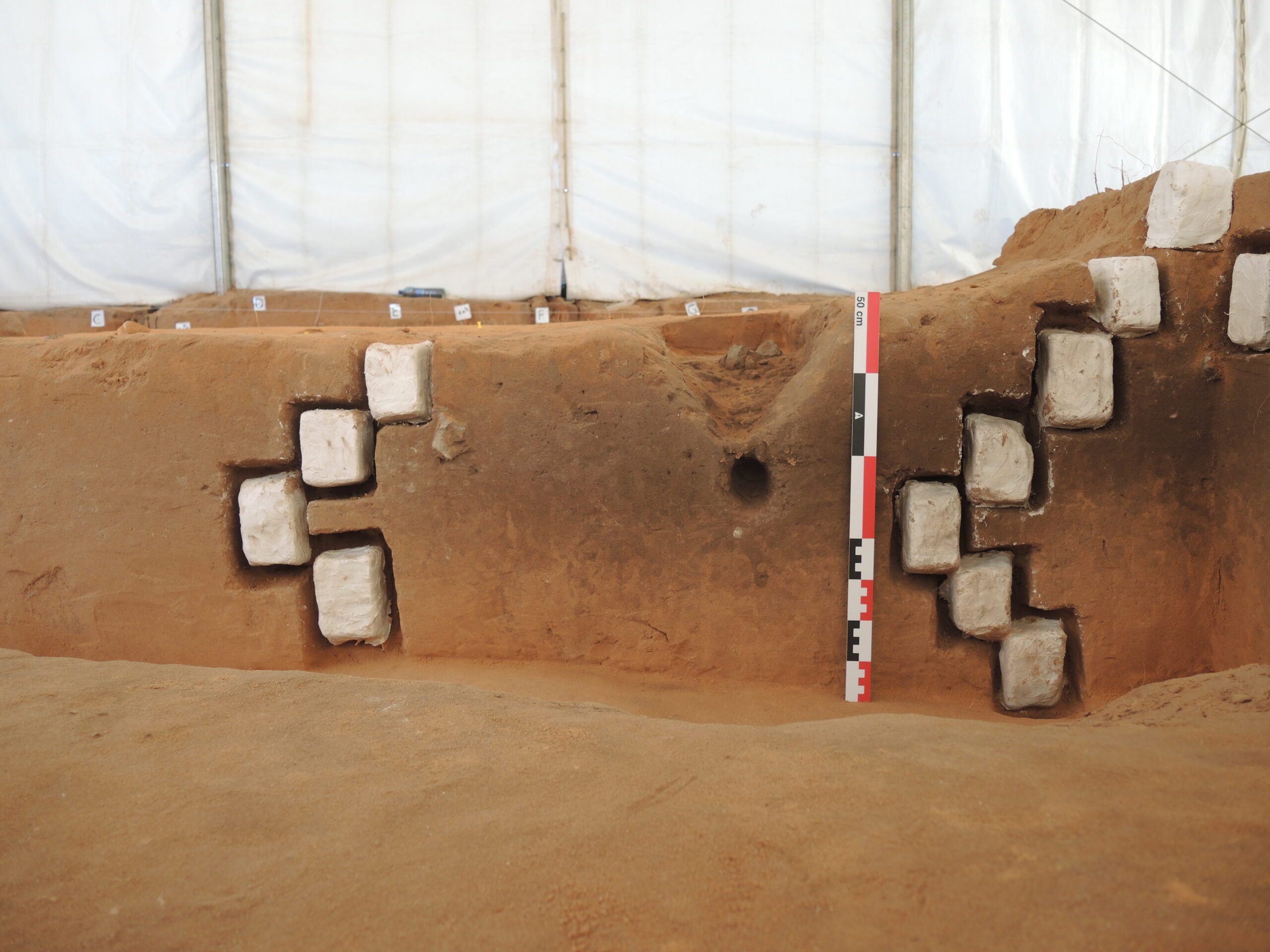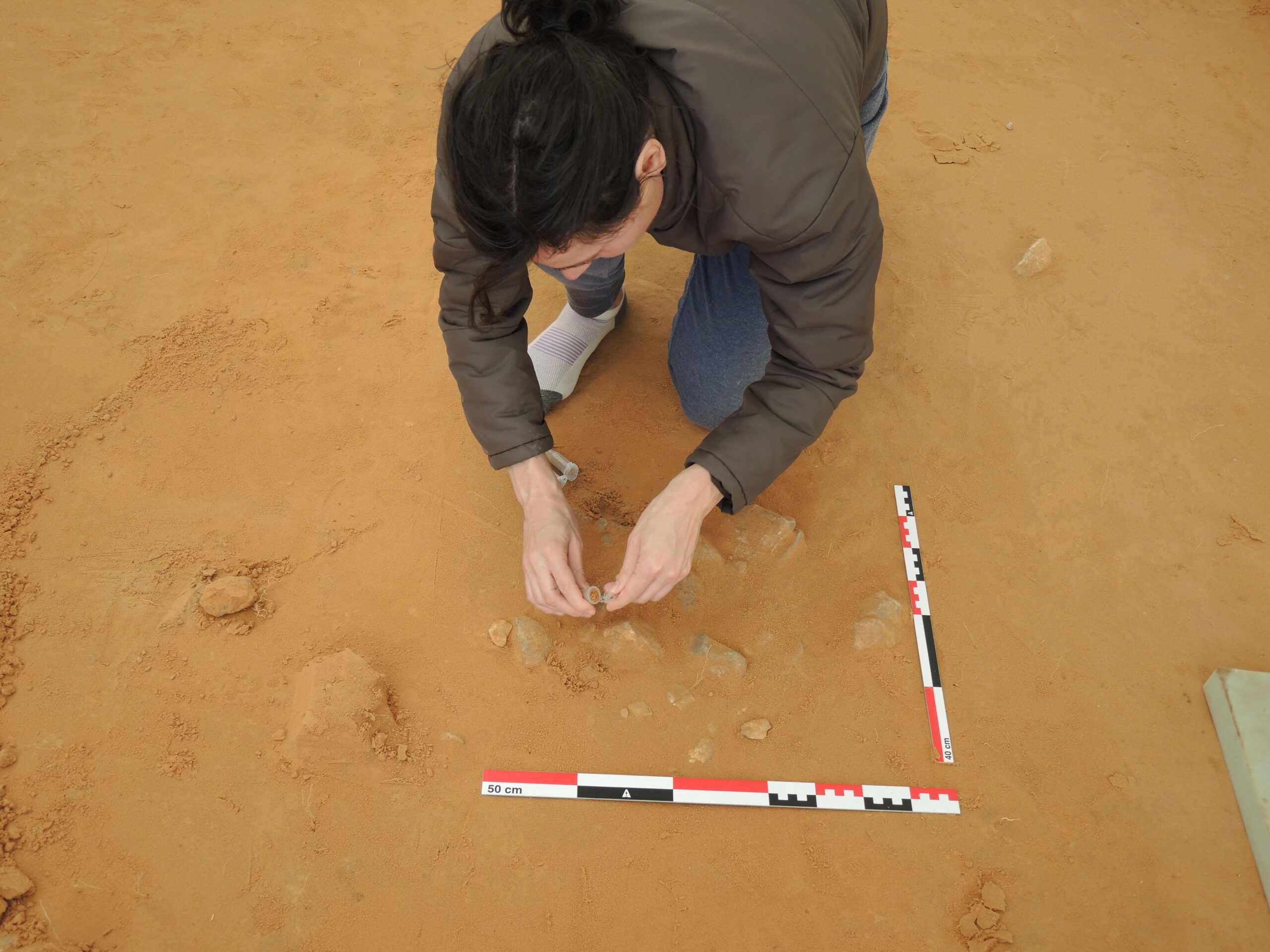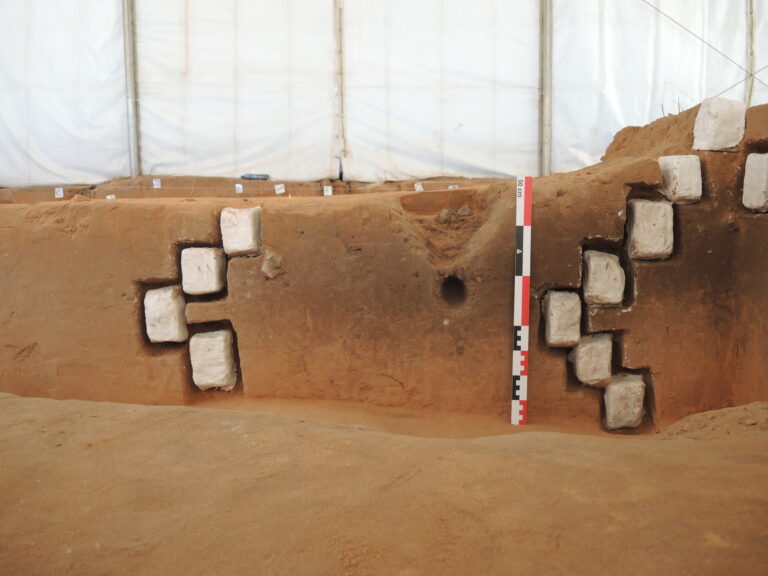New households dating from the Mesolithic are being studied at the Arenal de la Virgen site in Villena
A study on the archaeological sediments of Arenal de la Virgen, an open-air site located in a dune system next to the Laguna de Villena (Alicante), reveals the existence of camps with hearths during the Mesolithic. The goal of this work, published in the journal Archaeological and Anthropological Sciences, is to clarify the anthropogenic origin produced or modified by human activity of a common but little studied type of archaeological evidence in early Holocene Mesolithic sites located in semi-arid dune contexts in Europe, referred to as hearth-pits.

This is the first time in the Iberian Peninsula that this type of structure has been studied in detail by applying a systematic methodology in order to determine its formation, better understand its specific function and evaluate the alterations suffered after the occupation and abandonment of the site, as explained by Ana Polo-Díaz, researcher at the Department of Geography, Prehistory and Archaeology of the University of the Basque Country (UPV/EHU), member of the Prehistoric Research Group (Gizapre) and first author of the article. It is worth mentioning that the researchers have applied a novel methodology of interdisciplinary scientific archaeology that integrates stratigraphic and textural analysis, soil chemistry, micromorphology, petrography and optically stimulated luminescence (OSL) and thermoluminescence (TL).
In addition to Ana Polo-Díaz, the team was made up of the researcher from the University of Alicante (UA) and the University of Aarhus (Denmark) José Ramón Rabuñal; the researcher from the University of Rennes (France) Guilaume Guerìn, and the distinguished researcher from the UA Institute for Research in Archaeology and Historical Heritage (INAPH) Javier Fernández López de Pablo.

The results obtained confirm the anthropic origin of the structures investigated, whose chronology is associated with two different phases of occupation: the most distant, with an age of between 9,300 and 9,100 years, while the most recent is between 8,700 and 8,400 years old, confirmed Javier Fernández López de Pablo.
Remains found: hearths and an oven
With regard to the earliest phase of occupation, remains of structures corresponding to a possible furnace in a basin have been discovered, as well as an adjoining area dedicated to the accumulation of combustion residues from this furnace and with a specific use. With regard to the most recent phase, areas of activity have been identified that are larger in surface area than the oldest phase, in which, in addition to evidence of fire, residues of the occupation of a settlement that lasted between 200 and 400 years have been documented.
The data obtained show favourable climatic conditions for habitation during the specific period of time in which the settlement took place at Arenal de Virgen, during the Early Holocene. These environmental conditions were featured by an increase in humidity, temperature and vegetation cover, in contrast to the significantly higher aridity detected before and after the occupation of the site during the Pleistocene and Middle Holocene, respectively, as stated by the authors of the article.
The results of this work open up new perspectives for further research on the open-air settlements of the last groups of hunter-gatherers of prehistoric times in the Iberian Peninsula at a crucial moment in human evolution. This includes the period after the end of the last great glaciation and the beginning of the climatic period in which we find ourselves today, the Holocene.
The published study is part of the PALEODEM-Late Glacial and Postglacial Population History and Cultural Transmission in Iberia project. It is an ERC Consolidator project funded by the European Research Council, led by UA researcher Javier Fernández López de Pablo. The aim of this project is to shed light on the impact of climate on the demography of the last prehistoric hunter-gatherers in southeastern Europe and to assess how this impact affected the cultural transmission of these human groups.
Bibliographic information:
Polo-Díaz, A., Rabuñal, J.R., Guérin, G. et al. “Mesolithic hearth-pits and formation processes: a geoarchaeological investigation of sediments from El Arenal de la Virgen site (SE Iberia)”. Archaeological and Anthropological Sciences, (2023). https://doi.org/10.1007/s12520-023-01794-5
Press release from Asociación RUVID



